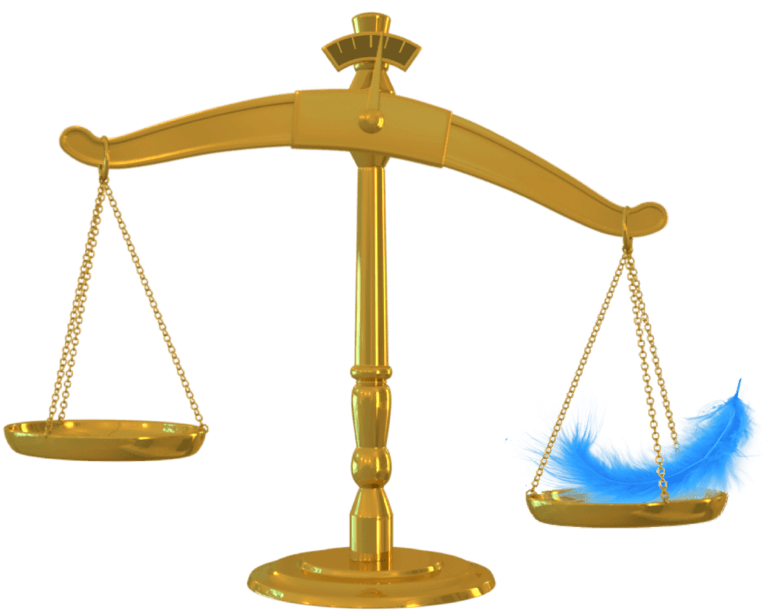The plaintiff attorney throws a ream of printer paper down on the table in front of the prospective jurors, and grabs an extra piece of paper from elsewhere, holding it up. “This ream of paper represents evidence, and our burden of proof,” they exclaim. “We have to prove our case by a preponderance of the evidence; so, if this ream of paper is 50%, we just need one piece of paper more”—and they set the single sheet on top of the ream.
Here is where you object! If not, here is how the plaintiff attorney continues: “We only have to prove our case by this single piece of paper more than the defendant.” They pick it up again and wave it around for the jury. “Who here thinks we should have to prove our case by more than a single piece of paper more than the defense? That we should have a higher burden than that?”

Of course, all the science-based, math-based, and foundational evidence jurors’ hands go up—how can a piece of paper mean you can win? Jurors have little to no experience in the civil litigation system, so they cannot assess what the burden of proof means, and they take the piece of paper analogy literally. (Some plaintiff attorneys will instead use a visual of the scales of justice—shown balanced at 50/50, of course—with just one tiny feather needed to tip the scales toward the plaintiff’s side.)
Either example is patently untrue about the nature of the law of the burden of proof. Neither side starts at 50%; both sides start at zero! And plaintiffs have to make it all the way past the 50% mark all by themselves. Technically, the defense doesn’t have to lift a finger.
Nevertheless, the worst-case scenario in voir dire is that plaintiff attorneys use this “light as a feather or piece of paper” framing to target every likely defense juror, in an attempt to either remove them for cause or bust the panel. We don’t want that. We want to bring the fight to them! But how?
Methods to Combat Plaintiffs’ Framing of Burden of Proof
File a Motion in Limine
If you know the plaintiff attorneys have a habit of extrapolating the burden of proof into a matter of a feather or piece of paper, file a motion with the court to block that interpretation. It can help to ask the judge to be the bearer of “truth” and read the burden of proof instruction to jurors.
Be Ready at the First Hint of the “Paper or Feather” Claim to Object as Argument
During voir dire, as soon as the plaintiff attorney shows the piece of paper on the ream or the feather on the scales, object as it being argumentative as to the burden of proof. Again, appeal to the judge to read the burden instead of allowing the plaintiff attorney to characterize it in their own way.
Show Jurors That Each Side Starts at 0%, Not 50%
In some venues, albeit rare, both sides have the option of showing jurors slides regarding voir dire and the burden of proof. Even if the venue does not allow slides, both sides will attempt to create some kind of visual, whether with words or a physical ream of paper. If basic slides are allowed and agreed upon, show jurors that both sides start at 0%, and the plaintiff must work from there.
For example, using a football field graphic (or verbal analogy), explain that both sides start at the zero-yard line on the same side. The plaintiff must pass the halfway mark—the 50-yard line—with credible evidence. That doesn’t just mean more witnesses, a longer case, more talking, or more paper—it must be actual evidence that the jury believes to be true.
Rehabilitate Jurors Who Admitted Bias: “The Court’s Instructions Won’t Mention Feathers or Paper”
This should be your last-ditch effort if the court is liberal with cause (generally) or regarding the burden of proof. Should the plaintiff attorneys successfully use their framing in voir dire to identify your likely defense jurors and get them to admit bias regarding the burden of proof, it’s worth trying to rehabilitate these jurors.
For instance, for those who stated that a piece of paper or a feather (or the preponderance for that matter) just wasn’t enough for them, you can use something like the following to address the bias the plaintiff attorneys allegedly unveiled:
“You’ve noted that you would struggle to treat the plaintiff’s case fairly based on your understanding of the burden of proof. However, you’ll hear, both from me and the court’s instructions, that the burden of proof isn’t in fact just a single piece of paper or a feather; it has to be credible evidence, put on by the plaintiff—not the defense—that proves their case to you. You’ll never hear in the instructions about a feather or a piece of paper. So, let’s stick to the law.”
This is also a great time to reinforce that the defense doesn’t have to prove a thing. Explain to jurors that “If the defense rested after the plaintiff’s case—that’s fully within the burden of proof. We may have things we want to tell you, so we’re going to put on our own case, but under the law, the defense doesn’t have to put on a case or prove a thing.”
Finally, remind jurors about the realities of the burden of proof, and ask if this new understanding changes their mind:
“The plaintiff has to start at zero. The defense also starts at zero. But the defense still wins if the plaintiff can’t pass the 50% mark. If you think about it in football terms, this means the plaintiff starts at their zero-yard line, and they have to make it all the way past the 50-yard line with credible evidence, not paper or feathers. The defense does not. Do you think you can follow the law now that you understand it a little more?”
Final Thoughts
The burden of proof in civil cases is always a tricky beast, especially for the defense. Many jurors’ inclination is to say they can start the two sides on even grounds, but to some degree they often implicitly or explicitly expect the defense to prove its case just as plaintiffs prove theirs. So, when a plaintiff attorney reframes the burden of proof in a way that further encourages this misconception, it’s even tougher for the defense to get a fair shake.
Nevertheless, if we come to court prepared with countermeasures like the above, we can limit a plaintiff attorney’s ability to control the narrative, and instead help jurors start with both sides evenly at zero.







